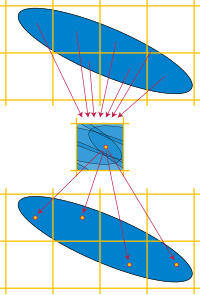Blichfeldt's theorem

Okay kiddo, have you ever played with Legos and built a tower really high? Well, imagine you have a bunch of different colors of Legos and you want to know how many different ways you can stack them all up in a tower. This is called a permutation.
Blichfeldt's theorem is a fancy math rule that helps us figure out how many different ways we can stack those Legos if we have to follow certain rules. For example, maybe we can only use each color of Lego a certain number of times, or maybe we have to put certain colors of Legos next to each other.
Now let's make it even simpler. Imagine you only have two types of Legos, red and blue. If you have three Legos total, how many different ways can you stack them up? Well, you can have three red, two red and one blue, one red and two blue, or three blue. That's four possible ways.
But what if we have to follow a rule that says we can only use each color of Lego once? Blichfeldt's theorem tells us that the number of possible permutations is equal to the smaller of the two numbers we want to multiply together. In this case, we have two colors of Legos and we want to use each one once, so the answer is two.
So basically, Blichfeldt's theorem is a math rule that helps us figure out how many different ways we can arrange things when we have to follow certain rules. It's like a special tool that helps us solve certain problems in math.
Blichfeldt's theorem is a fancy math rule that helps us figure out how many different ways we can stack those Legos if we have to follow certain rules. For example, maybe we can only use each color of Lego a certain number of times, or maybe we have to put certain colors of Legos next to each other.
Now let's make it even simpler. Imagine you only have two types of Legos, red and blue. If you have three Legos total, how many different ways can you stack them up? Well, you can have three red, two red and one blue, one red and two blue, or three blue. That's four possible ways.
But what if we have to follow a rule that says we can only use each color of Lego once? Blichfeldt's theorem tells us that the number of possible permutations is equal to the smaller of the two numbers we want to multiply together. In this case, we have two colors of Legos and we want to use each one once, so the answer is two.
So basically, Blichfeldt's theorem is a math rule that helps us figure out how many different ways we can arrange things when we have to follow certain rules. It's like a special tool that helps us solve certain problems in math.
Related topics others have asked about:
